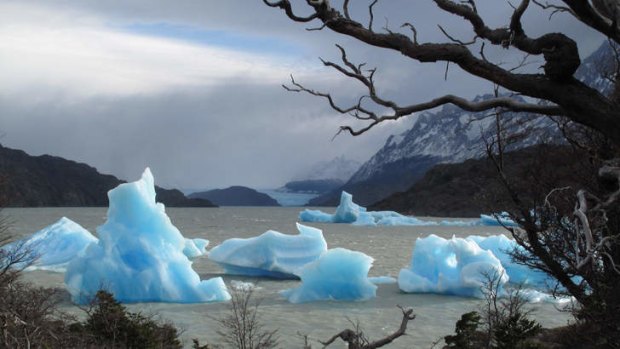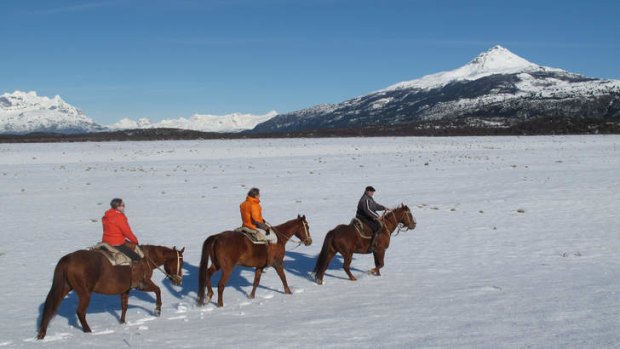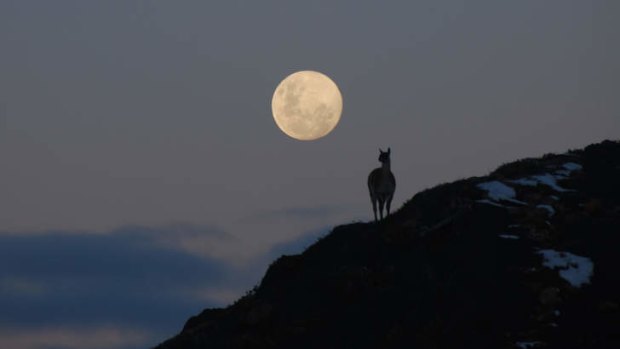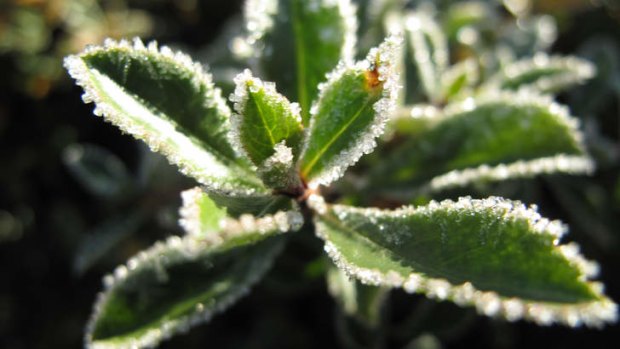
Icebergs in a Patagonian glacial lake.Credit: Roberto Leniz
Ute Junker tackles the ultimate off-season adventure walk: winter in Patagonia.
Technically, what I'm doing qualifies as walking. One hiking boot in front, then the other: that's walking, in anyone's book. So why does it feel like crawling?
The problem is the snow, studded with treacherous patches of ice that threaten to send me flying if I don't step very carefully. Next time I'll bring the snow poles.

Horse riding in the snow.Credit: Roberto Leniz
My first hike in the Patagonian winter, along Lake Nordenskjold, is slow going. Every so often, however, I look up long enough from scanning the snow to realise I'm standing in the middle of one of the most spectacular settings I've ever seen. In front of me is a snow-covered path, devoid of footprints; above me, towering mountains and glaciers, reflected in the pristine glacial lake beside me. And my guide and I are the only ones drinking it in.
No one goes to Patagonia in winter. During spring, summer and autumn, visitors flock to Chile to visit Torres del Paine, one of the most stunning national parks in the world.
With 181,000 hectares of jutting granite towers, snow-topped mountains, turquoise lakes, beech forests, rolling grasslands and carpets of wildflowers in which to go hiking, riding and climbing, you would think there would be plenty of room for everyone. However, my guide assures me that on summer weekends, the track on which we're standing is as crowded as any big-city rush hour.

A guanaco in the moonlight.Credit: Roberto Leniz
There are no crowds on the track this August day. There are no crowds at our hotel, the dramatic Hotel Salto Chico, the only hotel inside the national park. The hotel has recently reopened after an overhaul, but even so, I'm startled to discover I'm one of just three guests. Clearly, winter in Patagonia is not for everyone.
There are advantages to being here in the off-season, apart from the room to move. Summer is notorious for massive wind blasts, which come hurtling straight up from the Antarctic. Two of the guides tell me about the time they were camping and their tent got blown several metres down the mountain - with them inside it.
On the banks of Lake Nordenskjold, I'm feeling quite smug about having missed the winds: until a sudden blast of cold wind literally lifts me off my feet for a second or two.

Stark beauty: frosted leaves in Torres del Paine.Credit: Roberto Leniz
"I thought the terrible winds only happened in summer," I gasp, once my breath returns. "You can't call that wind," replies my guide - a slight, Kylie Minogue-size slip of a girl who didn't move an inch in the gust. "That was no more than 70 kilometres an hour. In summer, the winds can be up to 110 kilometres an hour."
The obvious downside to visiting Patagonia in winter is the cold. We're at the bottom of South America: the next major land mass is Antarctica. Surprisingly, the cold is nowhere near as intense as I expected. In fact, Rosario, the hotel's motherly manager, assures me temperatures often hover between 10 and 15 degrees. Don't think you can get away with dressing lightly, however: the wind chill factor lowers temperatures considerably.
Every time we plan to set foot outside, we have to layer up: from thermal underwear through to a couple of top layers, all of it crowned with a windproof jacket, beanie and gloves. On an uphill climb, as our heart rates speed up, we often end up striding along, open jackets flapping in the breeze. Once we head downhill again, though, they get done up very quickly.
While the winter landscape lacks the intense colours of the summer, it has a stark beauty all of its own. It helps that the Hotel Salto Chico is slap bang in the most scenic spot in the park: on the banks of Lake Pehoe, opposite a towering granite, snow and ice silhouette featuring the park's most recognisable peaks. The three towers that give the park its name, Torres del Paine, and the "horns" of the Cuerno del Paine, soar to more than 2000 metres.
The park is known for its jagged mountains and the glacier-fed lakes that reflect their silhouettes like mirrors, but I'm surprised by the diversity of landscapes.
One day, we wander through a beech forest, skeletal branches scraping at the sky; another day, we stand on a shingly beach and watch newly calved icebergs float slowly towards us. Coaxed by fellow guests to try riding - despite my lack of experience in that department - I explore the pampas on horseback, walking across a green plain kept constantly wet by snow-melt streams criss-crossing the flat land.
From the hotel, a series of full-day hikes take you to some of the park's best-known locations. There's the walk to the Grey Glacier, with views over the vast Southern Ice Field; the walk to the French Valley Glacier; the walk to the base of the Torres del Paine, which involves climbing 350 metres up glacial moraine.
Another surprise is the number of animals that flourish this harsh landscape. The most numerous are the guanaco, large-eyed, long-lashed relatives of the alpaca and the llama. Large herds graze on tough-leaved shrubs, eyeing us with only moderate curiosity.
The smaller animals are warier around humans. We spy swift-moving foxes and rheas, which look like smaller versions of emus and which have a surprising approach to child rearing. The male mates with a number of females, who all lay their eggs in the same nest. Then the females disappear, leaving the male to raise the offspring, which can number as high as 15. "It is very sad," my guide for the day, Roberto, says mournfully. I tell him I think it's terrific.
Roberto is also the guide who takes me to what might be my favourite spot in the park, Lake Sarmiento. With a sheltered position that keeps off the snow and the wind, Lake Sarmiento is the first place where we can actually sit on a rocky beach and soak up the scenery, without snow chilling us from beneath or the wind battering at our faces. Apart from the gentle lapping of the lake on the shore, absolute silence reigns.
Winter in Patagonia, I decide, is beautiful.
Ute Junker travelled courtesy of LAN Chile and Explora.
FAST FACTS
Getting there LAN Airlines has a fare to Punta Arenas for about $1500 low season return from Sydney, including taxes. Fly to Santiago (about 16hr including transit time in Auckland) then to Punta Arenas (4hr 10min via Puerto Montt). Melbourne passengers pay about $100 more and fly Qantas to Sydney or Auckland to connect. See lan.com. Transfers from Punta Arenas airport (about four hours) are included in the room rates.
Staying there Explora Hotel Salto Chico has a four-night package from $2820 a person twin share, including return airport transfers, all meals, house wine, soft drinks and beverages, daily activities and explorations with English-speaking naturalist guides. Phone Natural Focus Safaris on 1300 363 302, see naturalfocussafaris.com.au.
Sign up for the Traveller Deals newsletter
Get exclusive travel deals delivered straight to your inbox. Sign up now.